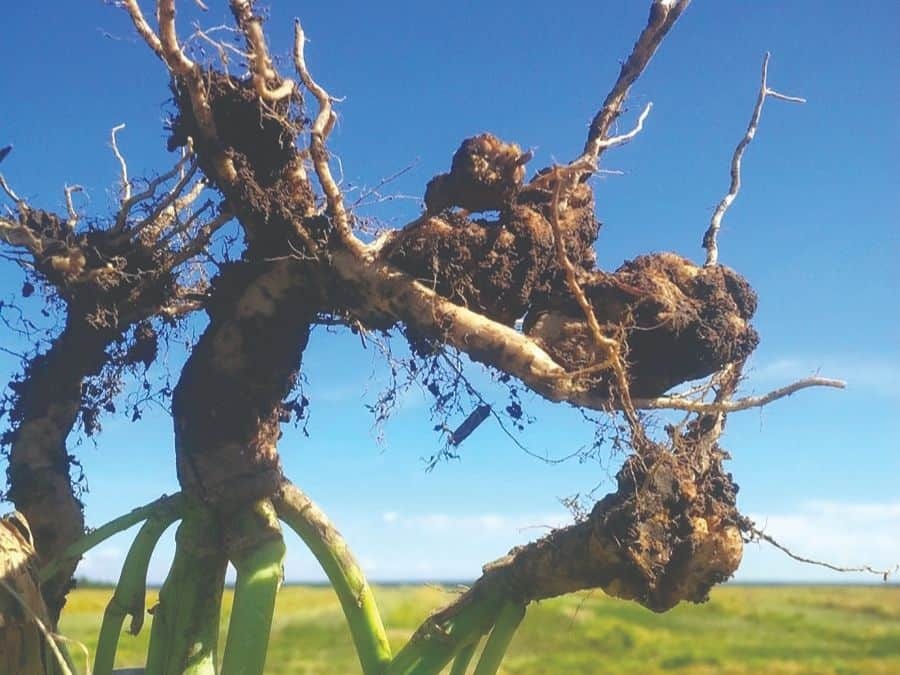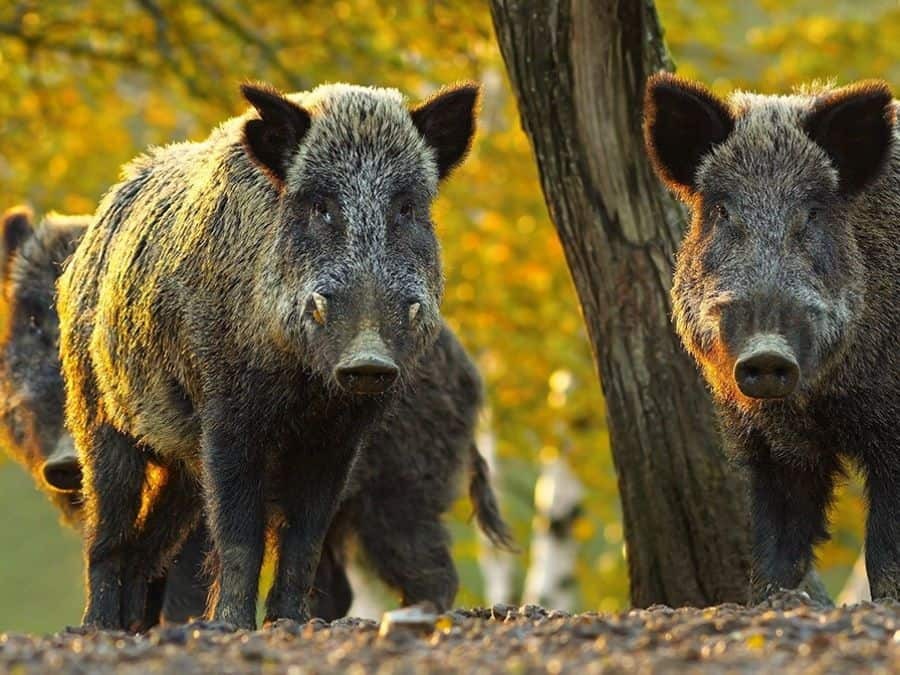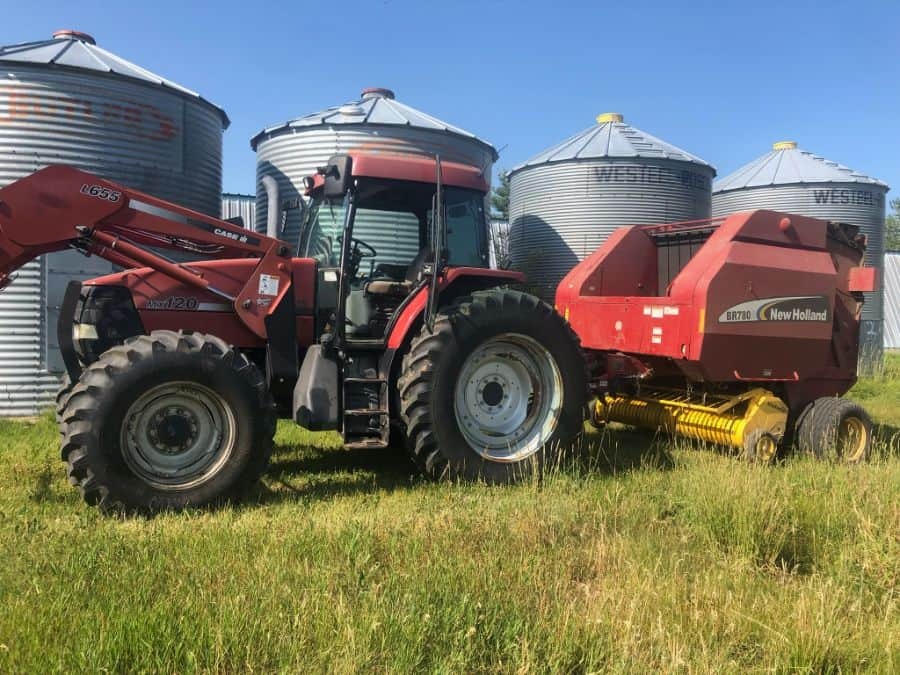
Vegetation Management
Dealing with common invasive species
Common Weed Control and Vegetation Management Questions Answered
Many landowners may have seen our weed inspectors walking up to their driveway, or have received our Weed Watch cards (either for a weed inspection or a vegetation management heads-up) and wondered either aloud or to themselves: “what on earth does the County want now?” Well, here are the answers to some of your most pernicious weed-related questions!
Weed Inspection FAQ
I’ve lived here for years and I’ve never had a weed inspection. When did this start?
Lac Ste. Anne County has always had a weed inspection program as required by Alberta’s Weed Control Act. Previously, we had insufficient resources to complete thorough private land inspections and the program consisted of scouting properties from the road. This resulted in pressure on some landowners to control their weeds, while other weed infestations went entirely unnoticed. Moving forward, our expanded program will become consistent with most of our neighbouring counties.
What kinds of weeds does the County inspect?
Under Alberta’s Weed Control Act, there are two lists of weed species that are categorized as noxious or prohibited noxious species and deemed illegal to propagate, spread, or have on property. Information regarding identification and control of noxious or prohibited noxious species, as well as other pest species, is provided by the Alberta Invasive Species Council.
Municipalities are charged with administrating this act. This means we inspect properties, inform landowners, encourage weed control, and may issue and enforce a weed notice under the Weed Control Act. We also inspect and control weeds on county-owned properties.
For more questions regarding the vegetation management program, please explore the Vegetation Management FAQ on this page.
Isn't the County trespassing on my land?
No, we are not trespassing on your property. Under the authority of Alberta’s Weed Control Act, inspectors are appointed by County Council and may enter property to inspect for presence or compliance of weed regulations. They are only permitted on your property during reasonable hours (generally business hours), and we will provide notification prior to. We cannot enter buildings.
This notification of a weed inspection can come in many forms. We provide public notification that the weed inspection program will begin within the County through this website, County Facebook and X (formerly Twitter) pages, and the Lac Ste. Anne Bulletin. More specific notification is provided with at least 24 hours’ notice, through door to door notification with weed inspection cards or phone calls. All residents are welcome to schedule appointments if they want to be present when the weed inspection is completed; the weed inspectors can be reached directly at their phone line.
The Weed Control Act provides further explanation of the weed inspector’s role. Parts 2 and 3 explain the inspectors and inspection process. Specifically, please note Part 3 (11) Obstruction of inspector:
"A person shall not wilfully obstruct or delay an inspector in the exercise of the inspector’s duties or powers to enforce and monitor compliance with this Act."
Hang on. Plants can be illegal? Since when?
Alberta’s Weed Control Act has been around since 1907, and Canada thistle has the prestige of being on the Act since its conception. Initially the Act listed weeds that were strictly bad for agricultural operations — species that were poisonous to livestock or out-competed crops. The Act has grown to incorporate weeds that are detrimental to human health, sensitive ecosystems like riparian areas, and even plants that can cause damage to infrastructure.
For instance, we found two sites in Lac Ste. Anne County with Japanese Knotweed in 2020. In Europe, if you have Japanese Knotweed on your property you may be deemed ineligible for house insurance because that plant can and will grow so aggressively that it will damage your foundation.
Why does my small lot matter when larger properties have these weed species?
Unintentional human spread is a common form of weed movement, therefore, a couple of plants present on a small lot can easily spread to a farmer’s field down the road. All it takes is a seed on a shoe, in the tread of a car tire, in a pocket, or on a child’s backpack to enter a field and in a few years there can be an infestation.
It is equally up to you and your neighbours to control their weeds, so the County does its best to encourage weed management and control weeds on its own land as well.
What is the County doing about weeds in its ditches and on County land?
As the primary method of weed control used by the County is herbicide application, it is more difficult to control weeds in areas of higher population or sensitive ecosystems. With the weed inspection program expanding, we were able to thoroughly inspect 64 municipal reserves and sections of ditches within subdivisions, provide detailed notification to residents of the subdivision, and safely complete the weed control. We will continue the expanded program to cover more county property and prevent the spread of weeds to private property as best we can.
I live near a highway and those ditches are a mess! Why hasn’t the County dealt with this?
Highway ditches are the property of Alberta Transportation. Weed complaints that come to us are forwarded to the Province to ensure control. As Lac Ste. Anne County and the Province of Alberta are both government entities run through taxpayer money, we do our best to work together. Due to the large amounts of rain in the last few years, weed populations skyrocketed. An attempt to control all weed species on all highway right of ways throughout the entire county is cost prohibitive. There is a five year plan in place for weed control along the highways, starting in 2019. Ideally, in 2024 the weed level in highway ditches will be more manageable through mowing and spot spraying.
Why should I control weeds on my property? Adjacent properties aren’t being managed.
Weed control is an expensive and uphill problem, and Lac Ste. Anne County understands that. We continue to try to “pick away at it” every year, and we hope that residents do the same thing. We understand that cleaning up a large area of weeds, especially if you had no idea that those plants were a problem previously, can feel impossible. Access can be hard. Control options can be limited. Money gets tight. However, doing something is better than doing nothing. Consider control around the perimeter, or in the area it is most likely to spread from.
Don’t like spray? Try mowing, picking, or pulling the plants. Those options don’t work? Try reseeding to a competitive stand of grasses, or pollinators, or native flowers. Species can be discussed with the Agriculture Services department, or some alternative plant options to invasive weeds can be found here. Have a neighbour with some weeds? Consider planting some trees to reduce spread via wind. Anything is better than nothing. And please, let us know if you have a neighbour or county property that has weeds present — we keep all complaints anonymous, and appreciate having some more eyes on the lookout for us. We can only cover so much ground in a few short months, so we appreciate all the help we can get.
It's frustrating to manage weeds on my property when my neighbours won't. What can I do?
Many factors effect plant populations, and this is reflected within the weed inspection program. We begin with education and encouragement, as it is the landowner’s responsibility to steward their property. If a landowner is not managing weeds, then the County can step in.
Currently, our program functions as follows:
- An inspection is done on your property. You are sent a report stating what weeds were found and where, along with an information sheet on the weed(s) and some control options. A reinspection date will be provided with the inspection letter; depending on the initial size of the infestation, the date can vary between one month and one year.
- At the reinspection, if there is some sign of weed control being completed but there are still weeds present, they will be sent another letter of inspection. If there is no sign of weed control being conducted, a weed notice can be issued through the mail with a deadline the following season. At least two control options will be provided to the landowner. We recognize that weed control is often deemed low priority, can be expensive, and is often weather dependent, so we wish to allow landowners some time to plan. A physical notice will be posted on the property early the following season, along with a mailed reminder notice.
- After the deadline of the weed notice, the County will enforce on the notice, usually through herbicide application. The cost of the process is then invoiced to the landowner and if not paid, will be placed on their tax roll. There will be multiple attempts to contact the landowner via phone, email, or letters.
A question I have isn’t answered here. Where do I go?
Please contact the Agriculture Services department through any of the following channels:
Integrated Vegetation Management FAQ
What is integrated vegetation management?
is the combination of chemical, mechanical, manual, and cultural weed control methods. Weed populations are living things; they are complex and ever-changing. As a result, there is no single “silver bullet” solution. To address this the County utilizes a combination of monitoring and various depending on the site conditions.
An Integrated Vegetation Management (IVM) program promotes compatible, desirable, stable vegetation cover that will resist invasion by invasive weeds and tall-growing tree species by using appropriate, environmentally sound, and cost-effective control methods.
Why control grass, brush and saplings in the ditch?
Lac Ste. Anne County maintains rural ditches to improve visibility and ensure safe road travel, allow proper drainage to prevent flooding, and prevent noxious and prohibited noxious weeds from spreading to protect the environment and surrounding agricultural land. Mowing alone offers only short-term brush control, with regrowth occurring within the season. Mowing brush and saplings results in increased wear and tear of mowing machinery, increasing material and maintenance costs. By incorporating targeted herbicide application, we can achieve efficient long-term control.
FireSmart Fact
Regular mowing also reduces the risk of wildfire spread from discarded cigarettes, sparks from gravel or pavement contact, intensified sunlight through discarded glass, as well as spread of fire from heavy brush areas and other unintentional starts. To learn more about the FireSmart program visit the County's Fire Services section.
Why does the County spray herbicides — aren’t they dangerous for our health?
In Canada, all herbicides undergo a risk assessment. When registering pest control products, Health Canada applies strict health and safety standards to protect everyone. This includes vulnerable groups like infants and children, pregnant and nursing mothers, and seniors. Health Canada will only register a pest control product if scientific evidence confirms that its use will not harm the health and environment of Canadians when it is used as directed on the label.
Why does the County spray herbicides – aren’t they dangerous for the environment?
Before a herbicide is authorized for use, Health Canada scientists review information about how the pesticide might change and move through the environment as well as the effects the herbicide might have on non-target organisms. Health Canada will only register a pest control product if scientific evidence confirms that its use will not harm the health and environment of Canadians when it is used as directed on the label. The County selects only registered herbicides with the least residual action and potential for accidental motility through the soil. To protect riparian areas, such as streams and wetlands, buffer zones are utilized. A buffer zone is an area where no herbicide application will occur.
Why does the County spray herbicides – don't they kill bees?
All herbicides undergo a risk assessment by the Pest Management Regulatory Agency (PMRA), which is a branch of Health Canada. Each herbicide is assessed to determine the potential effects (toxicity) on bees and other pollinators. No herbicides registered in Canada have been found to be toxic to bees or other pollinators. In fact, they are categorized as “practically non-toxic”, which is the safest possible category assigned by the PMRA. Honeybees are most active in the afternoon and least active in the morning. To further reduce the possibility of impacting bee populations, our team is most active in the morning, and avoids afternoon applications when possible.
What is the County doing about weeds in its ditches and on County land?
As the primary method of weed control used by the County is herbicide application, it is more difficult to control weeds in areas of higher population or sensitive ecosystems. With the weed inspection program expanding, we were able to thoroughly inspect 64 municipal reserves and sections of ditches within subdivisions, provide detailed notification to residents of the subdivision, and safely complete the weed control. We will continue the expanded program to cover more county property and prevent the spread of weeds to private property as best we can.
The people applying herbicides seem awfully young – do they know what they're doing?
Municipalities throughout the province have a long history of employing students and youth, and it is a tradition that we are proud to continue. Summer roles with the County provide young residents an opportunity to contribute to the community’s infrastructure maintenance while the County invests back into the residents. Additionally, the positions benefit university students, as the vegetation management season coincides with summer break.
The safety of our staff, residents, and the environment is our top priority. The County provides our applicators extensive training and certification, often above and beyond the legislated requirements. In fact, they undergo 50+ hours of training, including rigorous pesticide application certification, defensive driving, dog bite awareness, plant identification, and heat stress awareness, just to name a few.
By taking the time to teach our youth the value of safety, we can help them develop critical thinking and safe work practices for life.
Does the County spray all vegetation in the ditch?
No, we spot spray only where noxious/prohibited noxious weeds or brush are present. Trees and brush under two meters tall are also sprayed to prevent them from getting too close to the road’s edge. Our goal is control noxious/prohibited noxious weeds and promote healthy, native vegetation.
Why can’t the county use “safe” stuff like boiled vinegar?
The internet is full of “five-minute fixes” and “life hacks” — unfortunately many sources are only concerned with generating traffic and likes, and not concerned with the health and safety of the viewer. Preparing, storing, and using homemade pesticides can be dangerous to people’s health and the environment. Homemade pesticides do not undergo any testing. They do not have label directions to help you use them safely, they may not be effective, and they may have unintended consequences on the environment. To ensure the safety of our workers and the public, only registered pesticides are used.
Why wasn’t I told that the County would be spraying adjacent to my property?
For high population areas (i.e. subdivisions) notification of herbicide application events are provided to residents of properties adjacent to County-owned properties and rights-of-way where weed control is required. Notifications are hand delivered to provide advanced notice. This allows residents to call ahead with questions and concerns. County staff delivering the notifications welcome questions regarding upcoming weed control. When a resident is not home, the vegetation management notification is left in a visible place, such as a mailbox or taped to the door or gate.
The rural roadside spray program does not provide specific notification. A public notification is posted on the County website, Facebook page, and the Lac Ste. Anne Bulletin indicating that weed control and the weed inspection program are commencing. For more questions regarding the weed inspection program, please review the Weed Inspection FAQ on this page.
I don’t want the County to spray in my ditch – what can I do?
Lac Ste. Anne County is pleased to have offered a formal ‘No Spray Program’ for over a decade. By participating in the No Spray Program, the landowner is “adopting” the ditch, and assumes the responsibility of keeping it weed and brush free.
Landowners can obtain a copy of the No Spray Agreement by contacting Agricultural Services at 1.866.880.5722. For continued participation in the program, landowners are responsible to renew their application annually. This program is offered at no cost to the landowner.
Weeds/brush are encroaching on my property from the County ditch – what can I do?
Lac Ste. Anne County is pleased to offer a Fence Line Spray Program. Under this program, landowners can request that an area of ~1 metre inside a fence line be sprayed for the control of noxious and/or prohibited noxious weeds and brush.
Landowners can obtain a copy of the Fence Line Herbicide Application Form by contacting Agricultural Services at 1.866.880.5722. This program is offered at no cost to the landowner.
I have a question that isn't answered here. Where do I go?
Please contact the Agriculture Services department through any of the following channels:
Related Information and Resources
Was this information helpful?
to Top



